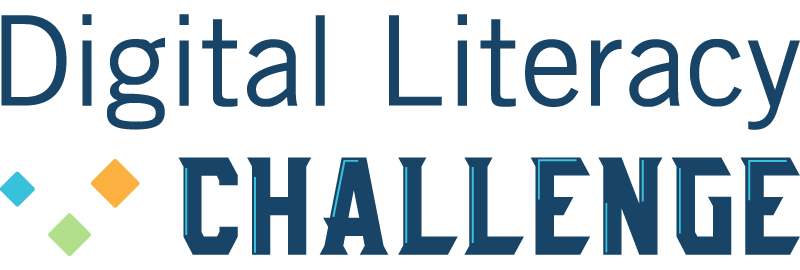
Challenge Four: Digital Scholarship
What it is:
The Digital Scholarship competency requires that we are comfortable incorporating appropriate types of digital media and tools for teaching and learning while ensuring academic integrity in the digital learning space. The digital tools we choose to incorporate should not be overly complicated; instead the key is to keep them simple, quick, and easy to use, and — most importantly — to intentionally incorporate them to enhance the learning goals of students and in turn ensure success in their individual learning journeys.
Why it is important:
By adapting the appropriate digital tools in our classrooms, we are helping students develop and nurture their digital literacy skills. The intentional integration of digital tools should aim to enhance the effectiveness of research questions and nurture student critical thinking and problem-solving skills. When used effectively, digital tools also help increase our own digital literacy as educators and enrich the learning experiences of our students.
Examples:
- Watch Dr. Catherine Anderson as she shares how incorporating short intro videos at the start of each lesson, accompanied by checklists, helped guide students in her classroom on their learning journey: Flex Forward (video, 2 minutes)
- See several examples across various subject areas of how digital tools can serve as appropriate enhancements to the student learning experience: How to Apply the SAMR Model with Ruben Puentedura (video, 7 minutes)
Multimedia Activity
Review Chapter 11, Using Technology to Enhance Your Content, Not Detract from It, by Neil Kotch, in the Pressbook Applying Digital Experience Design to Teaching and Learning Environments. Next, watch the video linked in the presentation below and click through the slides for some thought-provoking questions on mindfully using technology in your teaching practice.
Learning Activities
1. Learn it for yourself
Now that we’re halfway into the challenge series, it’s time to scaffold our learning! In the Technology Support challenge, we’ve already asked you to work with your institution’s teaching and learning centre, IT department, or library staff. By now you should know what tools are available to you within your institution’s learning management system (LMS) or videoconference platform or other tools already available at your institution.
For this week’s learning activity, let’s incorporate at least two of your institution’s digital tools and consider the six key points we learned this week.
We recognize that educators are busy, so let’s start with one-hour chunks at a time. Start by selecting the next one-hour synchronous lecture or presentation that you’d like to work on, and ask yourself:
- Are my lessons bite-sized (i.e., brief and concise)?
- Are my lessons digestible (i.e., organized and consistent)?
- Are my lessons appetizing (i.e., visual and engaging)?
2. Incorporate it into your teaching practice
Review these Four Live Class Models for One-Hour Synchronous Sessions against your one-hour lecture or presentation.
Consider adapting one of the four models. Is there a simple tool in your LMS or videoconferencing platform that could help you adapt one of the collaboration components — perhaps a Q&A discussion, a poll, or a breakout activity?
Here are some questions to ask yourself to determine if your technology-facilitated learning activities are enhancing, or detracting from, your content:
- Do these activities help your students stay engaged and help you evaluate their learning outcomes?
- Do these activities help you as an educator to periodically assess student learning?
- Are you periodically refreshing digital media materials in your course? If not, work with your faculty colleagues, check in with your program staff, and collaborate with teaching and learning staff to periodically refresh your materials.
Consider these steps to find new and creative ways to use technology in your teaching:
- Look outside your Learning Management System and see if there are any other tools that will help you enhance your teaching. Ask a colleague or a friend about tools that they find effective, and consider adapting them.
- Connect with your community by attending professional development opportunities and collaborating with fellow faculty/colleagues. Check out the Educational Technology Users Group for events and opportunities.
3. Teach it to students
Find an opportunity to teach this updated lesson plan in your next class — or at your next facilitated presentation or team meeting. Afterwards, seek student/participant feedback. Ask, “How did it go?” Did the digital tools help enhance their experience? And consider whether further tweaks are required.
Further Reading
- Common Sense Media offers a wide range of existing lesson plans and recommended tools for educators.
- Check out the Digital Scholarship competency page for a wide selection of available digital tools.

The SAMR model is interesting and I had never come across it before. I found this video explained it better for someone like me who didn’t know anything about it. https://www.youtube.com/watch?v=9b5yvgKQdqE
The video you posted is great, but it assumed that I knew what he was talking about (and I didn’t – LOL).
I will more explicitly follow live class model 4 from the PDF – I already do a version of this but I could be more explicit in planning the material. Thanks for the suggestions!